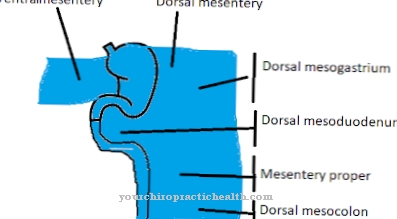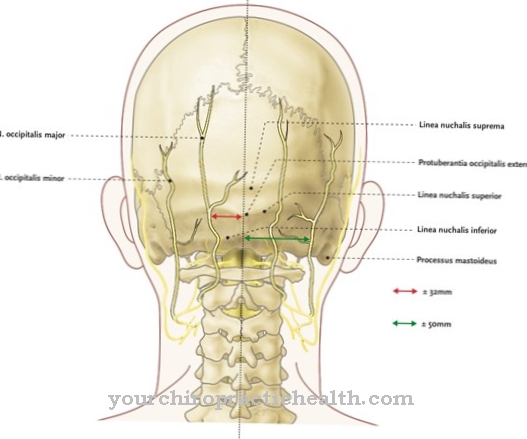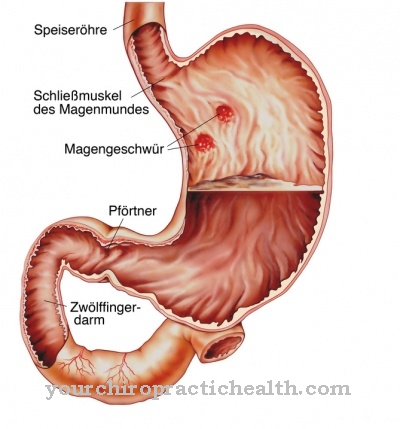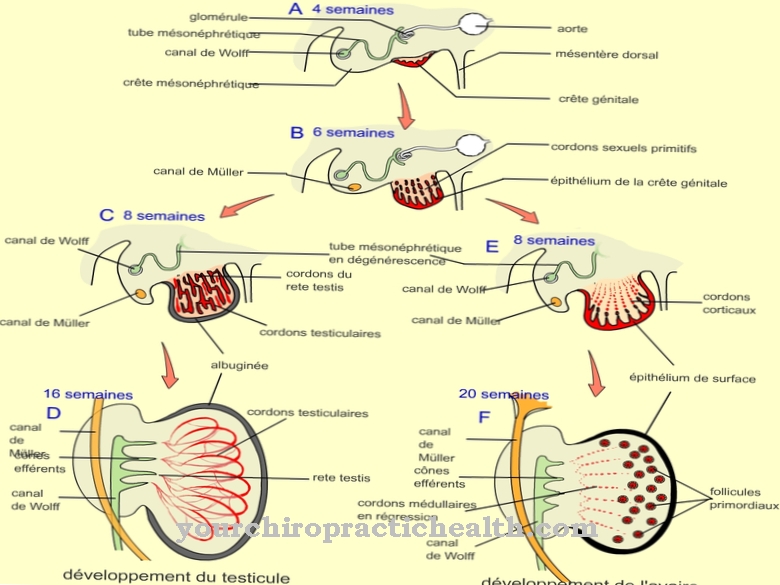Nothing works without them: The Main artery, medically too aorta called, forms the outflow tract from the heart up to the branching into the pelvic and leg arteries and works, so to speak, "at high pressure" on the blood supply to the entire organism, around the clock, 365 days a year, for many decades. So you should pay attention to your main artery so that this task will pass you by without a trace even in old age.
What is the aorta?
The Main artery (aorta) is the largest artery in the human body and the starting point for all blood supply.
It arises from the left ventricle of the heart, is then about 2.5-3.5 cm wide in the adult and runs "walking stick-like" over a length of 30-40 cm until it branches into the pelvic arteries.
All of the body's blood has to pass through this blood vessel before it is further distributed to the head, arms, stomach and legs.
Anatomy & structure
Except for minor variations, the anatomy is the same for all people: The Main artery originates from the left ventricle, the "high pressure system" of the heart, and initially runs headward, where it then curves above the heart in the middle of the chest to the left half of the body and finally bends down and to the left in front of the spine through the chest and abdomen pulls down.
The first blood vessels to emerge from the aorta are the coronary arteries; the supplying vessels for the arms and head then go upwards along the aortic arch.
The aorta then supplies the individual rib segments and the entire abdominal cavity with blood via defined outlets, before dividing into the right and left pelvic arteries at the so-called "aortic bifurcation" at approximately the level of the navel. These then pull further down to reach the pelvic area and legs.
Function & tasks
The function of the Main artery is the supply of the entire body with blood, in which oxygen and nutrients are supplied and metabolic end products can be transported away.
In order to be able to guarantee this supply against gravity in the head or with the heaviest physical exertion down to the last muscle cell, the heart has to build up enormous pressure, the arterial blood pressure. In healthy adults, this should be around 120/80 mmHg, i.e. a maximum of 120 centimeters on the mercury column, a historically determined medical measuring instrument.
The main artery must now withstand this pressure and forward it to the periphery, if possible, without making major cuts. For this purpose, the wall of the aorta is somewhat flexible, especially in its arched course, in order to be able to build up a kind of pressure reservoir even in the millisecond intervals in which the heart is currently not actively pumping.
The elasticity of the wall is therefore important to ensure function and is severely impaired by calcification of the vascular wall (arteriosclerosis).
Illnesses & ailments
The insidious thing about diseases of the Main artery is that the person concerned often only notices it when it is already too late. They are mostly asymptomatic, ie "without symptoms".
The basis of these life-threatening clinical pictures are mostly arteriosclerosis and high blood pressure. The calcification of the arterial wall impairs its elasticity, narrows the diameter and possibly relocates branching vessels to vital organs such as the abdomen. The latter can, for example, lead to regularly recurring abdominal pain after eating, i.e. when the intestine needs a lot of blood for digestion and cannot get it due to the narrowed vessel.
The calcification and narrowing of the main artery then leads to a reaction of the heart, which increases the blood pressure in order to still ensure the supply of the body through the narrowed aorta. This in turn damages the vessel wall even more - a vicious circle develops. Two immediate life-threatening emergencies are the "aortic dissection" and the "ruptured aortic aneurysm".
During dissection, the blood digs its way through calcified wall areas into the vascular wall and relocates both the vascular branches to the brain and the main artery itself. Sharp chest or back pain that occurs suddenly and without any previous history is an urgent reason to call an emergency doctor immediately!
An aortic aneurysm, on the other hand, is a bulging of the vascular wall due to high blood pressure, which usually occurs in the abdomen and often goes unnoticed for years. The bulge, however, thins the vessel wall of the main artery so that it tears at some point, that is, "ruptures". One possible consequence is internal bleeding to death, which is only noticeable through pain when it is already too late.
Risk factors such as high blood pressure, high blood fat levels, smoking and diabetes mellitus should therefore be avoided or treated.
























.jpg)



